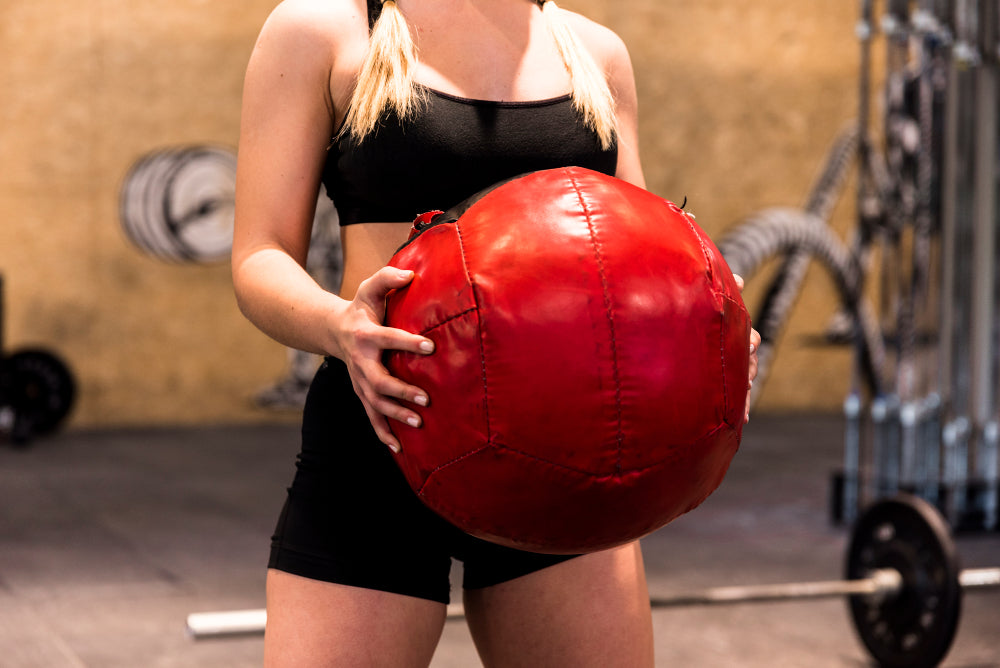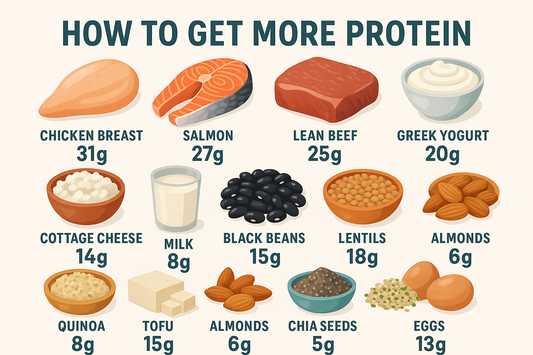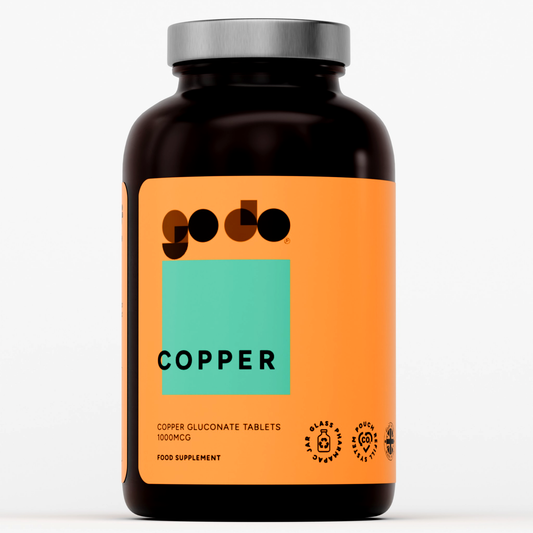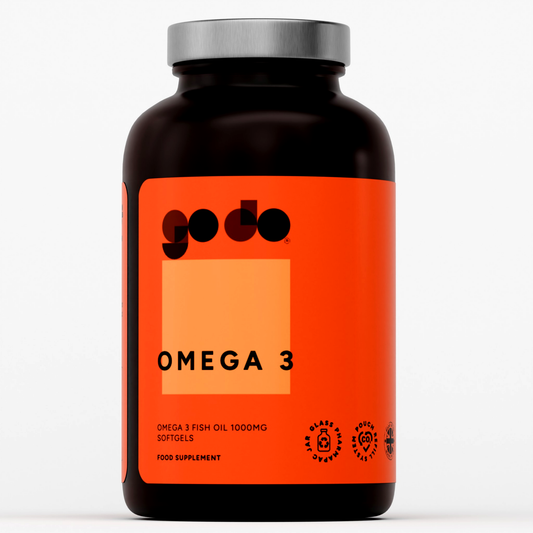Workouts with the Medicine Ball: A Versatile Tool for Full-Body Fitness
The medicine ball is a versatile and effective piece of equipment that can add variety and intensity to your workout routine. Dating back to ancient times, this simple weighted ball has stood the test of time as a valuable fitness tool.

Workouts With The Medicine Ball: What Are They?
Medicine balls are available in different shapes and sizes, offering versatile tools for increasing strength. Medicine balls have a special purpose for throwing, catching and catching enabling explosive moves that increase the athlete's athletic performance significantly. The dynamic exercise builds strength, increases coordination, balance, and flexibility making best medicine ball exercises as this an invaluable part of any workout routine.
How to Use a Medicine Ball
The beauty of medicine ball training with balls is that they are versatile as they may serve to throw, slap or even add resistance and intensity to traditional muscle training such as squatting, pushup and deadlift. Tell me about your muscle mass for pushup exercises. Is it necessary? What’s the best way to use medicines? When using slapping and throwing objects there is a point of gaining strength. Unless it can easily be thrown, it will cause time waste. It’s possible to start at 4-15 pounds and reaches 7-8 pounds of weight in the middle. For beginners, it is recommended to use a 4-6 pound lightweight medicine ball for a more effective workout. In training power should be gained at the start of workouts with the most energy.
Benefits of Medicine Ball Workouts:
- Full-body engagement: Many medicine ball exercises involve multiple muscle groups, providing an efficient full-body workout.
- Functional fitness: The movements mimic real-life activities, improving your ability to perform daily tasks.
- Core strengthening: Most exercises require core stability, helping to build a strong midsection.
- Improved coordination: The dynamic nature of medicine ball exercises enhances hand-eye coordination and overall body awareness.
- Versatility: Suitable for various fitness levels and easily adaptable to different exercises.
- Cardiovascular benefits: High-intensity medicine ball workouts can provide an excellent cardio boost.
Effective Medicine Ball Exercises:
Medicine Ball Exercises: Medicine Ball Slams
The Kneeling Medicine Ball Slam is a powerful exercise that targets multiple muscle groups slowly lower back while providing an excellent cardiovascular workout. This dynamic movement enhances rotational core strength, which is crucial for daily functional movements and athletic performance. Additionally, it engages the glutes, quadriceps, hamstrings, and adductors, making it a comprehensive lower body exercise.
How to perform:
- Starting position:
- Kneel on a padded surface or exercise mat with your knees hip-width apart.
- Sit back on your heels, keeping your core engaged and back straight.
- Hold a medicine ball with both hands at chest level.
- The slam:
- Explosively rise up onto your knees while simultaneously lifting the ball overhead.
- Engage your core and use your entire upper body to forcefully slam the ball into the ground slightly in front of you.
- As you slam, exhale forcefully to maximize core engagement.
- The catch and reset:
- Allow your arms to follow through after the slam.
- Quickly catch the ball as it bounces back up or scoop it from the ground.
- Immediately bring the ball back to your chest, controlling its momentum.
- Lower your hips back towards your heels to reset for the next repetition.
- Repeat:
- Perform the movement for the desired number of repetitions, maintaining a steady, controlled pace.
Key points to remember:
- Keep your core tight throughout the entire movement to protect your lower back.
- Use your hips and torso rotation to generate power for the slam, not just your arms.
- Maintain a tall spine, avoiding excessive forward lean during the slam.
- Choose a medicine ball weight that allows you to maintain proper form and control throughout the exercise.
- Start with 2-3 sets of 10-15 repetitions, adjusting based on your fitness level.
Benefits:
- Improves rotational core strength and stability
- Enhances upper body power and explosiveness
- Provides an effective cardiovascular workout
- Strengthens the glutes, quadriceps, hamstrings, and adductors
- Improves coordination and full-body control
- Serves as an excellent stress-reliever and outlet for aggression
By incorporating Kneeling Medicine Ball Slams into your workout routine, you'll enjoy a challenging, full-body exercise that improves both strength and cardiovascular fitness while mimicking functional, real-world movements.
Russian Twist With Medicine Ball
The Russian Twist is a powerful core exercise that primarily targets the obliques while also engaging the entire abdominal region. When performed with a medicine or ball in both hands, it adds an extra challenge and increases the overall effectiveness of the movement.
Proper Technique:
- Starting Position:
- Sit on the floor with your knees bent and feet flat on the ground.
- Lean back slightly, lifting your feet about 6 inches off the floor. This creates a V-shape with your torso and thighs.
- Hold the medicine ball close to your chest with both hands.
- Foot Placement Options:
a) Feet lifted (advanced): -
Keep your feet raised throughout the exercise for maximum core engagement.
b) Heels touching (intermediate): -
Lower your heels to touch the ground while keeping your toes pointed up.
c) Feet flat (beginner): - Keep your feet flat on the ground if you're new to the exercise or need more stability.
- The Twist:
- Engage your core by pulling your navel towards your spine.
- Rotate your torso to the right, bringing the medicine ball to the right side of your body.
- Touch the medicine ball lightly to the ground beside your hip.
- Rotate back to the center and then to the left side, touching the ground on that side.
- Continue alternating sides in a controlled manner.
Key Points for Effective Execution:
- Maintain a straight back: Avoid rounding your spine. Keep your chest up and shoulders back.
- Control the movement: Perform the twists slowly and deliberately. Resist the urge to use momentum.
- Breathe steadily: Exhale as you rotate to each side, inhale as you return to center.
- Keep your feet strong:
- Flex your feet, pointing your toes towards your shins.
- Engage your leg muscles throughout the movement.
- If your feet tend to drop, try crossing your ankles for added stability.
- Increase the challenge:
- Lift your feet higher off the ground.
- Move the medicine ball further away from your body.
- Use a heavier medicine ball as you progress.
- Maintain form: If you feel your form breaking down, return to an easier foot position or reduce the number of repetitions.
Repetitions and Sets:
- Beginners: Start with 2-3 sets of 10-15 rotations per side.
- Intermediate to Advanced: Aim for 3-4 sets of 20-30 rotations per side.
By focusing on proper form and gradually increasing the difficulty, you'll maximize the benefits of this exercise, strengthening your obliques, improving your rotational core strength right leg over, and enhancing overall trunk stability. Remember, quality of movement is more important than quantity, so always prioritize proper technique over higher repetitions.
Wall Balls: A Dynamic Full-Body Challenge
Wall Balls are a high-intensity, functional exercise that combines elements of squatting, explosive pushing, and hand-eye coordination. This compound movement engages multiple muscle groups simultaneously, making it an excellent choice for both strength training and cardiovascular conditioning.
Proper Technique:
- Starting Position:
- Stand about 2-3 feet away from a sturdy wall.
- Hold a medicine ball at chest level with both hands, fingers spread for control.
- Feet should be shoulder-width apart, toes pointing slightly outward.
- The Squat:
- Initiate the movement by sitting back and down as if lowering into a chair.
- Keep your chest up, back straight, and core engaged.
- Lower until your thighs are at least parallel to the ground, or as low as you can with good form.
- Keep your weight in your heels, and don't let your knees extend past your toes.
- The Throw:
- Explosively drive through your heels to stand up.
- As you reach full extension, use the momentum to throw the ball upward against the wall.
- Aim for a target about 9-10 feet high (adjust based on your height and skill level).
- Fully extend your arms as you release the ball.
- The Catch:
- As the ball rebounds off the wall, prepare to catch it with soft hands.
- Absorb the ball's momentum by bringing it back to your chest.
- Simultaneously lower back into the squat position to begin the next rep.
Key Points for Effective Execution:
- Maintain rhythm: Try to create a fluid, continuous motion between the squat, throw, and catch.
- Breathe properly: Inhale as you squat down, exhale forcefully as you throw the ball.
- Keep your core engaged: This protects your lower back and improves overall stability.
- Use your legs: The power for the throw should come primarily from your leg drive, not your arms.
- Aim consistently: Pick a specific target on the wall to improve accuracy and consistency.
- Stay athletic: Remain light on your feet, ready to adjust to the ball's rebound.
- Scale appropriately: Adjust the ball weight, target height, or squat depth based on your fitness level.
Safety Considerations:
- Start with a lighter ball until you master the technique.
- Ensure you have enough space and that the wall can withstand the impact.
- Wear appropriate footwear with good traction.
Variations:
- Single-arm wall balls for unilateral training.
- Lateral wall balls to emphasize oblique engagement.
- Wall ball slams for more upper body emphasis.
Repetitions and Sets:
- Beginners: Start with 3 sets of 8-10 repetitions.
- Intermediate: Aim for 3-4 sets of 12-15 repetitions.
- Advanced: Try 4-5 sets of 15-20 repetitions or timed sets (e.g., max reps in 1 minute).
Wall Balls offer a challenging, full-body workout that improves strength, power, endurance, and coordination. By focusing on proper form and gradually increasing intensity, you'll reap the benefits of this dynamic exercise, enhancing your overall athletic performance and functional fitness.
Overhead Lunge with Medicine Ball Press
The Overhead Lunge with Medicine Ball Press is a compound exercise that combines lower body strength, core stability left leg move, and upper body pressing power. This dynamic movement enhances full-body coordination, balance, and functional strength.
Proper Technique:
- Starting Position:
- Stand with feet hip-width apart.
- Hold the medicine ball at chest level with both hands.
- Engage your core and maintain a tall, upright posture.
- The Overhead Press:
- Before stepping into the lunge, press the medicine ball straight overhead.
- Fully extend your arms, keeping your biceps close to your ears.
- Maintain a slight bend in your elbows to avoid hyperextension.
- The Lunge:
- Take a large step forward with one foot.
- Lower your body until both knees are bent at approximately 90-degree angles.
- Keep your front knee aligned with your ankle, not extending past your toes.
- Lower your back knee towards the ground, stopping just before it touches.
- The Return:
- Push through the heel of your front foot to return to the starting position.
- As you stand, bring the medicine ball back to chest level.
- Repeat the movement, alternating legs with each repetition.
Key Points for Effective Execution:
- Maintain core engagement: Keep your abdominals tight throughout the entire movement to protect your lower back and maintain balance.
- Keep your chest up: Avoid leaning forward during the lunge; maintain an upright torso.
- Control the descent: Lower into the lunge slowly and with control.
- Breathe properly: Inhale as you lower into the lunge, exhale as you press up and return to standing.
- Stay balanced: Focus on a spot in front of you to help maintain balance, especially when the ball is overhead.
- Full range of motion: Aim for 90-degree angles in both knees during the lunge, but adjust as needed based on your flexibility and strength.
Safety Considerations:
- Start with a lighter medicine ball until you master the technique.
- Ensure you have enough overhead clearance.
- If you have shoulder issues, keep the ball at chest level instead of pressing overhead.
Variations:
- Stationary Lunge: Perform all reps on one leg before switching.
- Walking Lunge: Continue moving forward with each rep.
- Reverse Lunge: Step backward instead of forward for a different challenge.
Repetitions and Sets:
- Beginners: Start with 2-3 sets of 6-8 repetitions per leg.
- Intermediate: Aim for 3-4 sets of 8-10 repetitions per leg.
- Advanced: Try 3-4 sets of 12-15 repetitions per leg or increase the medicine ball weight.
Muscles Worked:
- Primary: Quadriceps, Glutes, Hamstrings, Shoulders
- Secondary: Core, Calves, Upper Chest, Triceps
The Overhead Lunge with Medicine Ball Press is an excellent exercise for improving overall body strength, stability, and coordination. It challenges your balance while simultaneously working your legs, arms extended core, and upper body. By focusing on proper form and progressively increasing the difficulty, you’ll enhance your functional fitness and athletic performance.
Medicine Ball Push-Up
Medicine Ball Push-Up: A Dynamic Core and Upper Body Challenge
The Medicine Ball Push-Up is an advanced variation of the traditional push-up that introduces med ball as an element of instability, thereby engaging more muscle groups and improving overall strength and stability. This exercise primarily targets the chest, triceps, and shoulders while also significantly challenging the core and promoting unilateral strength.
Proper Technique:
- Starting Position:
- Begin in a standard push-up position with your hands slightly wider than shoulder-width apart.
- Place one hand on the floor and the other on a medicine ball.
- Engage your core, glutes, and quads to maintain a straight line from head to heels.
- The Push-Up:
- Lower your body by bending your elbows, keeping them at about a 45-degree angle to your torso.
- Lower until your chest nearly touches the floor (or as low as you can with good form).
- Push back up to the starting position, focusing on keeping your body straight and stable.
- The Transition:
- At the top of the push-up, smoothly roll the medicine ball to your other hand.
- Quickly adjust your position to prepare for the next repetition.
- Repeat:
- Perform another push-up with the medicine ball now under the opposite hand.
- Continue alternating hands with each repetition.
Key Points for Effective Execution:
- Maintain a rigid plank: Keep your body in a straight line throughout the entire movement.
- Control the medicine ball: Roll it smoothly between hands without losing balance.
- Full range of motion: Lower your chest as close to the ground as possible while maintaining form.
- Pace yourself: Perform the exercise slowly and with control, especially when transitioning the ball.
- Breathe steadily: Inhale as you lower, exhale as you push up.
- Equal work: Ensure you're doing an equal number of repetitions on each side.
Safety Considerations:
- Start with a smaller, lighter medicine ball until you master the technique.
- Ensure you're on a non-slip surface to prevent the medicine ball from rolling unexpectedly.
- If you have wrist issues, start with incline push-ups or use push-up handles before progressing to the medicine ball.
Variations:
- Staggered Push-Up: Keep the medicine ball in place and alternate which hand is on it.
- Stability Ball Push-Up: Use a larger stability ball for an even greater balance challenge.
- Decline Medicine Ball Push-Up: Elevate your feet to increase difficulty.
Repetitions and Sets:
- Beginners: Start with 2-3 sets of 5-8 repetitions per side.
- Intermediate: Aim for 3-4 sets of 8-12 repetitions per side.
- Advanced: Try 3-4 sets of 12-15 repetitions per side or increase the size/weight of the medicine ball.
Muscles Worked:
- Primary: Pectorals (chest), Triceps, Anterior Deltoids (front shoulders)
- Secondary: Core (including obliques), Serratus Anterior, Biceps, Back muscles (for stability)
The Medicine Ball Push-Up is an excellent exercise for improving upper body strength, core stability right knee,, and overall balance. By introducing instability, it forces your body to engage more stabilizing muscles, leading to greater overall strength and improved functional fitness. Remember to focus on maintaining proper form throughout the movement, and progress gradually to avoid injury.
Partner Medicine Ball Toss with Lunge Pass
This dynamic exercise combines cardiovascular conditioning, strength training, and coordination. It’s an excellent way to improve full-body strength, proprioception, and reactive abilities while engaging the whole body in a fun, partner-based workout.
Setup:
- Partners stand about 10-15 feet apart (adjust based on skill level and ball weight).
- Both partners start in an athletic stance: feet shoulder-width apart, knees slightly bent, core engaged.
- One partner begins with the medicine ball.
Execution:
- Basic Toss:
- The partner with the ball throws it using a chest pass motion to their partner.
- The receiving partner catches the ball, absorbing its momentum by bringing it into their chest.
- Immediately throw the ball back to the first partner.
- Continue this back-and-forth motion for the desired number of repetitions or time.
- Lunge With Medicine Ball Pass:
- Start in the same position as the basic toss.
- The partner with the ball steps into a forward lunge (alternate legs with each toss).
- Position the left foot back with toes curled under at a 90-degree angle during the lunge.
- From the lunge position, throw the ball to your partner.
- The receiving partner catches the ball and immediately steps into a lunge.
- Continue alternating lunges and tosses.
Key Points for Effective Execution:
- Engage your core: Keep your abdominals tight throughout the entire movement.
- Use proper throwing technique: Push the ball from your chest, extending your arms fully.
- Soft catches: Absorb the ball's momentum by pulling it into your body as you catch it.
- Full lunge: In the lunge variation, ensure your front knee doesn't extend past your toes.
- Maintain balance: Keep your upper body upright during the lunge.
- Coordinate breathing: Exhale as you throw, inhale as you catch.
Safety Considerations:
- Start with a lighter ball (2-4 lbs) and progress to heavier weights as you build strength and perfect your form.
- Ensure you have enough space and that the area is clear of obstacles.
- Communicate clearly with your partner to avoid misthrows.
- If you have any shoulder, knee, or back issues, consult a healthcare professional before attempting this exercise.
Variations:
- Squat and Throw: Perform a squat before each throw.
- Rotational Toss: Add a torso rotation to engage the obliques.
- Single-Leg Stance: Balance on one leg while throwing and catching.
Repetitions and Sets:
- Beginners: Start with 2-3 sets of 20-30 seconds of continuous tosses.
- Intermediate: Aim for 3-4 sets of 30-45 seconds.
- Advanced: Try 4-5 sets of 45-60 seconds or increase the ball weight.
Muscles Worked:
- Primary: Quadriceps, Hamstrings, Glutes, Chest, Shoulders, Core
- Secondary: Calves, Biceps, Triceps, Upper Back
Benefits:
- Improves hand-eye coordination and reaction time
- Enhances proprioception and body awareness
- Develops functional, full-body strength
- Boosts cardiovascular fitness
- Improves balance and stability
- Engages core muscles continuously
The Partner Medicine Ball Toss with Lunge Pass is an excellent exercise for developing overall athleticism, coordination, and full-body strength. It's particularly beneficial for sports that require quick reactions and full-body movements. Remember to focus on proper form, start with a manageable weight and distance, and progress gradually to avoid injury. This exercise can be a fun and effective addition to your workout routine, especially when you want to train with a partner.
Conclusion
Integrating medicine ball exercises into your fitness regimen offers a dynamic and versatile approach to full-body conditioning. These exercises bridge the gap between traditional strength training and functional, sport-specific movements, providing numerous benefits:
- Functional Strength: By mimicking real-world movements, medicine ball exercises enhance strength that translates directly to daily activities and athletic performance.
- Core Engagement: Almost all medicine ball exercises require significant core activation, leading to improved stability and posture.
- Power Development: The explosive nature of many medicine ball movements helps build power, crucial for various sports and activities.
- Improved Coordination: The multi-planar movements involved in medicine ball exercises enhance body awareness and coordination.
- Cardiovascular Conditioning: High-intensity medicine ball workouts can significantly boost cardiovascular fitness.
- Versatility: With a single piece of equipment, you can target every major muscle group and energy system in your body.
- Injury Prevention: The stabilizing nature of these exercises can help reduce the risk of injuries in daily life and sports.
- Mental Engagement: The variety and challenge of medicine ball workouts keep your mind engaged, potentially improving adherence to your fitness routine.
To maximize the benefits and minimize the risk of injury, remember these key points:
- Start with a lighter ball and master proper form before progressing to heavier weights or more complex movements.
- Focus on quality of movement over quantity of repetitions.
- Gradually increase intensity and complexity as your fitness improves.
- Incorporate a variety of medicine ball exercises to target different muscle groups and movement patterns.
- Listen to your body and respect your limits to avoid overexertion.
By consistently incorporating medicine ball exercises into your workout routine, you'll not only diversify your training but also unlock new levels of functional fitness. Whether you're an athlete looking to enhance performance, a fitness enthusiast seeking new challenges, or someone aiming to improve overall health, medicine ball training offers a fun, effective, and rewarding path to achieving your fitness goals. Embrace the versatility of the medicine ball, and watch as it transforms your workouts and accelerates your progress towards a stronger, more capable you.











